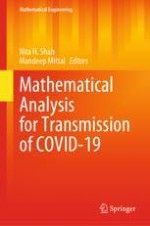2021 | OriginalPaper | Chapter
12. Analysis of Novel Corona Virus (COVID-19) Pandemic with Fractional-Order Caputo–Fabrizio Operator and Impact of Vaccination
Authors : A. George Maria Selvam, R. Janagaraj, R. Dhineshbabu
Published in: Mathematical Analysis for Transmission of COVID-19
Publisher: Springer Singapore
Activate our intelligent search to find suitable subject content or patents.
Select sections of text to find matching patents with Artificial Intelligence. powered by
Select sections of text to find additional relevant content using AI-assisted search. powered by
